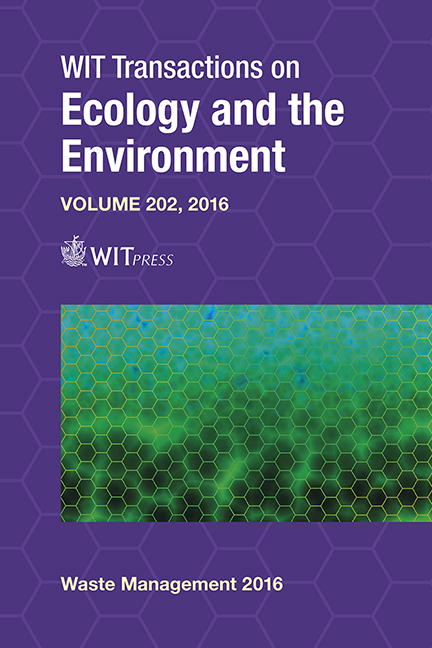E-waste In Mexico: A Case Study Of Tepic, Nayarit
Price
Free (open access)
Transaction
Volume
202
Pages
12
Page Range
207 - 218
Published
2016
Size
1,332 kb
Paper DOI
10.2495/WM160191
Copyright
WIT Press
Author(s)
C. E. Saldaña, S. Messina, Y. Rodriguez-Lascano, M. García, H. Ulloa
Abstract
In Mexico, in the past 30 years, urban solid waste has become a serious problem of environmental pollution and a cross cutting issue. In this sense, the lifestyles of modern societies lead to primary consumer dynamics of various technologies, which include electronic equipment. Once their useful life is finished, they become waste that ends up in open dumps. Likewise, as they are mainly composed of metals, various substances harmful to health and producing toxic gas emission to soil, water, air substances, waste then generate environmental and public health problems that may be of great magnitude that deteriorate both local and regional surroundings. This research study focuses on the evaluation of an e-waste selective collection program called “Reciclatron” that has been developed at higher education, as a case study at the Autonomous University of Nayarit (UAN), Mexico. The methodology consisted of the classification of e-waste considering the stages of collection, characterization, quantification, recovery and reuse, and marketing 3064.95 kg of e-waste were collected, projected to exceed 6 tons in the next edition. This program is an opportunity to promote the culture of prevention, environmental awareness and knowledge in the treatment of waste for both the university community and society as a whole.
Keywords
e-waste, environmental pollution, Reciclatron, collection





